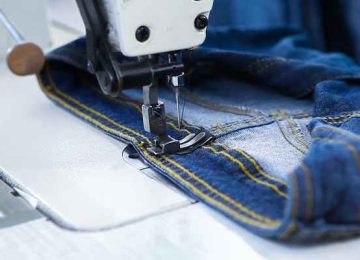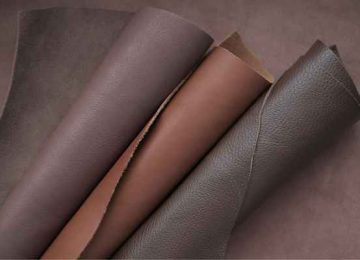

Our Leather & Textile Testing Services with Cutting-Edge Technology
Our state-of-the-art leather and textile testing laboratory offers the industry’s best testing solutions to ensure that your materials meet the highest standards of quality and safety. With cutting-edge technology and expert technicians, we provide a wide range of tests including physical, chemical, and mechanical tests to evaluate the properties and performance of your leather and textile products. Our goal is to provide you with reliable, accurate and timely results that will help you make informed decisions and improve the quality of your products. Trust us to provide you with the best leather and textile testing services in the industry.
Physical Testing Parameters in textiles
- Tensile Strength Testing in Textiles
- Tear Strength Testing in Textiles
- Seam Strength Testing in Textiles
- Burst Strength Testing in Textiles
- Abrasion Resistance Testing in Textiles
- Pilling Resistance Testing in Textiles
- Wrinkle Resistance Testing in Textiles
- Stiffness Testing in Textiles
- Flexibility Testing in Textiles
- Dimensional Stability Testing in Textiles
Chemical Testing Parameters in textiles
- pH Value Testing in Textiles
- Colorfastness to washing Testing in Textiles
- Colorfastness to light Testing in Textiles
- Colorfastness to perspiration Testing in Textiles
- Colorfastness to rubbing Testing in Textiles
- Flammability Testing in Textiles
- Water Repellency Testing in Textiles
- Stain Resistance Testing in Textiles
What We Offer In Textile Testing Services
- Tensile/Breaking Load Test: The maximum force required to break a fabric, measured in Newton. Testing Method: IS 1969-2009.
- ElongationTest: The increase in length of a stretched fabric compared to its initial length, expressed as a percentage. Testing Method: IS 1969-2009.
- Tear ResistanceTest: The force required to tear a fabric specimen, measured in Newton. Testing Method: IS 6489-1993.
- Bursting StrengthTest: The maximum fluid pressure applied to a circular specimen before it ruptures. Testing Method: IS 1966-1975.
- Mass per Unit Area/Density Test: The mass of one square meter of fabric, measured in grams. Testing Method: IS 1964-2001.
- Threads Count Test: The number of threads per unit length of fabric. Testing Method: IS 1963-1981.
- Dimensional Change of Fabric Test: The change in dimensions of fabric or garments after soaking in water, expressed as a percentage of the original dimension. Testing Method: IS 1313-1984.
- Dimensional Change of Fabric Test (other than wool): The change in dimensions of woven or knitted fabrics after soaking in water without agitation. Testing Method: IS 2977-1989.
- Linear Density Test: The density of cotton yarn expressed as the number of 768.1m hanks per 453.6 gm (Cotton Count System) or the mass in grams of 1 km of yarn (Tex System). Testing Method: IS 1315-1977.
- Colour Fastness Test: The resistance of colour change in a treated fabric compared to the original. Types of Colour Fastness:
- Colour Fastness to Daylight : Tested by exposing the fabric to daylight and comparing the change in colour to a standard pattern. Testing Method: IS 686-1985 & IS 2454-1967.
- Colour Fastness to Washing: Tested by mechanically agitating a specimen with soap or soap & soda solution and comparing the change in colour to the original fabric with a greyscale. Testing Method: IS/ISO 105-C10:2006.
- Colour Fastness to Organic Solvent: Tested by agitating a specimen in an organic solvent and comparing the change in colour to the original fabric with a greyscale. Testing Method: IS 688-1988.
- Colour Fastness to Perspiration: Tested by exposing the specimen to two different solutions containing histidine and comparing the change in colour to the original fabric with a greyscale. Testing Method: IS 971-1983.
- Colour Fastness to Bleaching: Tested by agitating the specimen in Sodium Hypochlorite and Hydrogen peroxide solution and comparing the change in colour to the original fabric with a greyscale. Testing Method: IS 762-1988.
- Identification of Fibres: The process of determining the type of fibres in a textile artefact. Testing Method: IS 667-1981.
- Blend Fiber Composition: The determination of different fibres in a sample. Testing Method: IS 1564-1988, IS 1889-1976, IS 2005-198, IS 2006-1988, IS 3416-1999, IS 3421-1988, IS 6503-1988, IS 6504-1988, IS 9896-1981.
- Chloride and Sulphate Test: In textile industries, during various treatments, textiles may gather or be added with water-soluble salts such as sizing or finish materials. Excessive amounts of these substances may have harmful effects on the fibers. Test methods: IS 4202 – 1967 for Chloride and IS 4203 – 1967 for Sulphate.
- Fatty Matter Content Test: The sample is extracted with a solvent and the residue is expressed as fatty matter. Test method: IS 199 – 1989.
- Moisture Content Test: The sample of textile (in the form of yarn, fiber, or fabric) is dried at 105°C and the loss in weight is expressed as the moisture content.
- Ash Content Test: The dried textile sample is ignited under specific conditions and the residue left is expressed as the ash content.
- Iron & Chromium Test: Iron and Chromium are commonly found in mineral khaki-dyed textiles, used for making uniforms, etc. Test method: IS 4655 – 1968.
- Solvent Soluble Matter Test: The textile material is extracted with a solvent (ethyl ether or benzene methanol mixture) and the residue is expressed as a percentage of the textile weight. Test method: IS:4390 – 2001.
- pH Value of Water Extract Test: The pH of the textile’s aqueous extract indicates its processing history and can indicate its acidity/alkalinity. Test method: IS 1390 – 1983.
- Scouring Loss Test: Cotton textiles undergo treatments that may add extraneous matter to the original material. Scouring removes these impurities. Test method: IS 1383 – 1977.
- Carboxylic Acid Group Test in Cellulosic Textile Material: Cellulose textiles may come into contact with oxidizing agents during chemical processing, resulting in the formation of oxy cellulose of acidic character. Test method: IS 1560 – 1974.
- Barium Activity Number Test: The ratio of barium hydroxide absorbed by mercerized cotton vs. unmercerized cotton, multiplied by 100. Test method: IS 1689 – 1973.
- Formaldehyde Test in Textiles: Some textiles finishes may release formaldehyde, which can be reduced by washing the garment. Test method: IS 14563 – 1999.
What We Offer In Footwear & Leather Testing Services
- Leather Safety Boots and Shoes For Minors, IS: 1989 (P 1):1986: 2021, Testing All Physical & Chemical Parameters
- Leather Safety Boots and Shoes For Heavy Metal Industries, IS 1989 (P2):1986,Testing All Physical & Chemical Parameters
- Canvas Shoes Rubber Sole, IS 3735:1996,Testing All Physical & Chemical Parameters
- Canvas Shoes Rubber Sole, IS 3736:1995, Testing All Physical & Chemical Parameters
- Protective Rubber Canvas Boots For Minors, IS 3976:2003, Testing All Physical & Chemical Parameters
- Industrial and Protective Rubber Knee and Ankle Boots, IS 5557:2004, Testing All Physical & Chemical Parameters
- Rubber Gum Boots and Ankle Boots, IS 5557 (P-2):2018, Testing All Physical & Chemical Parameters
- Moulded Solid Rubber Sole and Heel, IS 5676:1995, Testing All Physical & Chemical Parameters
- Rubber Microcellular Sheets For Soles, IS 6664:1992, Testing All Physical & Chemical Parameters
- Solid PVC Soles and Heels, IS 6719:1972, Testing All Physical & Chemical Parameters
- PVC Sandals, IS 6721:1972, Testing All Physical & Chemical Parameters
- Rubber Hawai Chappal, IS 10702:1992, Testing All Physical & Chemical Parameters
- Leather Safety Footwear Having Direct Moulded Rubber Sole, IS 11226:1993, Testing All Physical & Chemical Parameters
- Slipper Rubber, IS 11544:1993, Testing All Physical & Chemical Parameters
- PVC Industrial Boots, IS 12254:993, Testing All Physical & Chemical Parameters
- Polyurethane Sole Semi Rigid, IS 13893:1994, Testing All Physical & Chemical Parameters
- Unline Moulded Rubber Boots, IS:13995: 1995, Testing All Physical & Chemical Parameters
- Leather Safety Footwear With Direct Moulded PVC Sole, IS:14544:1998, Testing All Physical & Chemical Parameters
- Personnel Protective Equipment Safety, IS 15298 (P-2): 2016, Testing All Physical & Chemical Parameters
- Footwear Personnel Protective Equipment Protective Footwear, IS 15298 (P-3): 2018, Testing All Physical & Chemical Parameters
- Personnel Protective Equipment Occupational Footwear, IS 15298 (P-4): 2017, Testing All Physical & Chemical Parameters
- Sports Footwear, IS 15844:2010, Testing All Physical & Chemical Parameters
- Footwear For Men & Women For Muncipal Scavenging Work, IS 16994:2018, Testing All Physical & Chemical Parameters
- High Ankle Tactcal Poots With PU Rubber Sole, IS 17012:2018, Testing All Physical & Chemical Parameters
- Antiriot Shoes, IS 17037:2018, Testing All Physical & Chemical Parameters
- Derby Shoes, IS 17043:2018, Testing All Physical & Chemical Parameters
Need Quality Testing of Your Textile Or Leather Product? Call us to Enquire Now!


